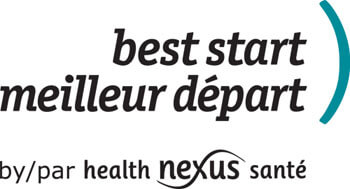Glossary
Acknowledgements
The Best Start Resource Center thanks staff from the following organizations for their help to
develop this guide:
- Canadian Child Care Federation
- Chatham-Kent Public Health Unit
- George Brown College
- Halton Our Kids Network
- Leeds, Grenville and Lanark District Health Unit
- Northwestern Health Unit
- Nutrition Resource Centre
- Ophea
- Peel District School Board
- University of Guelph
We would also like to thank the parents and the experts who helped to review and finalize this guide.
We would also like to thank the following people who helped revise this guide:
- Consultant – Kim Tyler, Ottawa, Ontario
- Ontario Ministry of Education
- Ontario Dental Association
- Ontario Association of Optometrists
- Ontario Public Health Association, Nutrition Resource Centre
- Ontario Society of Nutrition Professionals in Public Health (OSNPPH)
- Pinecrest-Queensway Community Health Centre: Specialized Preschool Programs
- School of Health Sciences, Humber College
This document has been prepared with funds provided by the Government of Ontario. The information herein reflects the views of the authors and does not necessarily reflect the views of the Government of Ontario. The resources and programs cited throughout this guide are not necessarily endorsed by the Best Start by Health Nexus Resource Center or the Government of Ontario.
2019
